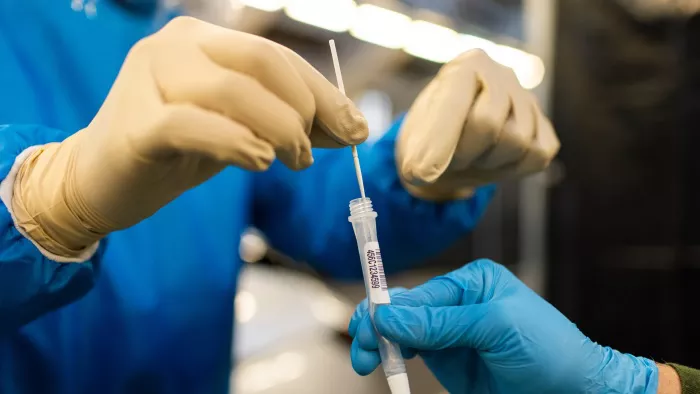As measles cases surge both in the United States and globally, a crucial global measles and rubella laboratory network is teetering on the brink of collapse, primarily due to significant funding cuts by the U.S. This development has sent shockwaves through the international health community, prompting charities to urgently step in and attempt to salvage the situation.
The network, which consists of over 700 laboratories across more than 150 countries, has been a linchpin in the global fight against measles for 25 years. It is managed by the World Health Organization (WHO), but since its inception, the funding has predominantly come from the U.S. Centers for Disease Control and Prevention (CDC). However, as part of the U.S.’s decision to withdraw from the WHO, the Trump administration slashed the funding for this vital network. Tedros Adhanom Ghebreyesus, the WHO’s director – general, has stated that the network now “faces imminent shutdown.”
Measles is an extremely contagious disease. Jennifer Nuzzo, the director of Brown University’s pandemic center, compared the laboratory network to “smoke detectors” in a fire scenario. “Measles is like a fire that spreads incredibly fast. The last thing you’d want to do in a fire is get rid of the smoke detectors, yet that’s exactly what’s happening,” she said. The network plays a pivotal role in identifying measles cases accurately. Since the classic symptoms of measles, such as fever and rash, can be easily confused with other diseases like scarlet fever or roseola, the laboratories analyze blood samples to determine and track the strain of measles. This information is essential for understanding how the virus is spreading and evolving, and it also helps initiate early outbreak responses, often in the form of vaccination campaigns.
The current situation is dire. In the U.S., there have been large – scale outbreaks in Texas and New Mexico. Roughly 300 cases have been confirmed, and a school – aged child has died, marking the first measles – related fatality in the country in a decade. Canada is also experiencing a growing outbreak. In Europe, measles cases surged to 125,000 in 2024, reaching their highest level in 25 years, according to a joint report by WHO and UNICEF. The Democratic Republic of Congo has been severely hit, with over 300,000 cases in 2023, and the outbreak there persists.
In response to the funding crisis, several charities have started to mobilize. They recognize that the collapse of this network could have catastrophic consequences for global public health. These organizations are now scrambling to raise funds and advocate for the network’s continued existence. Some are reaching out to other countries, urging them to step in and provide financial support. Others are launching public awareness campaigns to highlight the importance of the network and the potential risks of its shutdown. The WHO estimates that it needs $8 million annually to keep the network running. While this may seem like a large sum, experts argue that it is a small price to pay compared to the cost of dealing with widespread measles outbreaks, which can include emergency vaccination campaigns, hospitalization, and the loss of lives.
The spokesperson for the U.S. CDC, when asked about the funding cut, said that the move aligns with the president’s executive order to withdraw from the WHO and emphasized that domestic measles and rubella lab funding and essential laboratory supplies support are still ongoing, but the U.S. will no longer support measles labs in other countries. As the situation unfolds, the world watches to see if charities and the international community can come together in time to save the measles surveillance network and prevent a potential global measles epidemic.
Related topics:
































